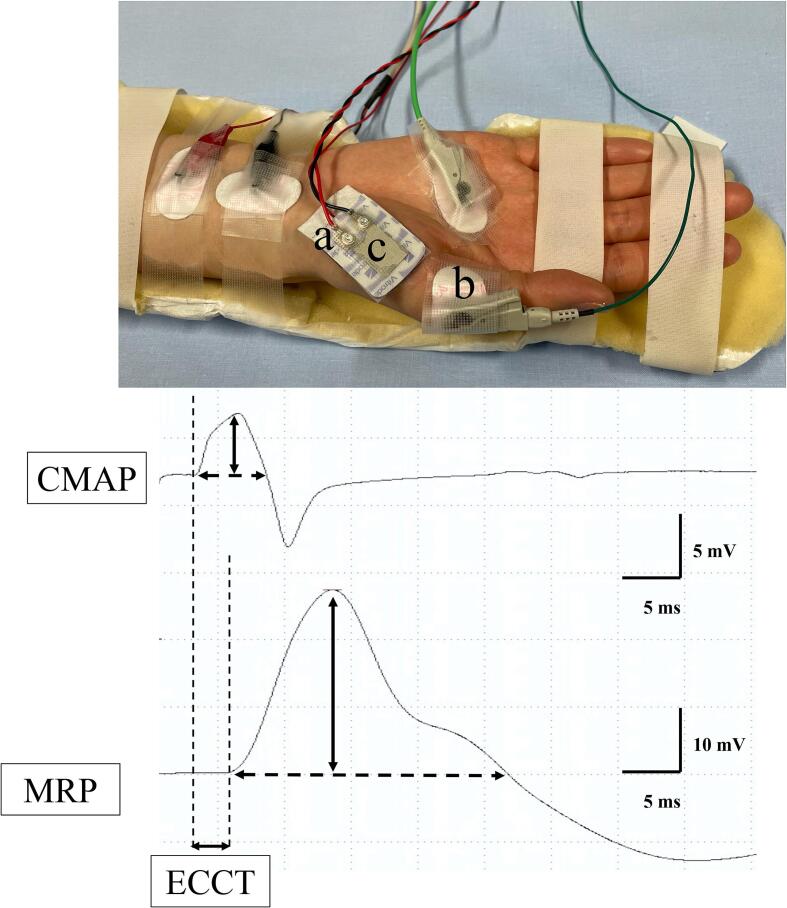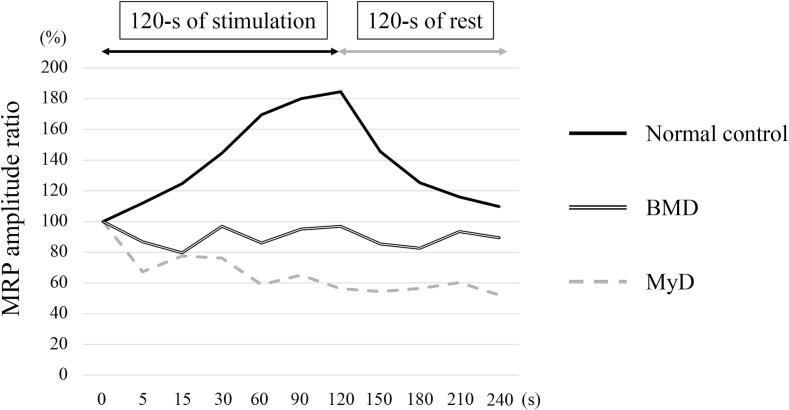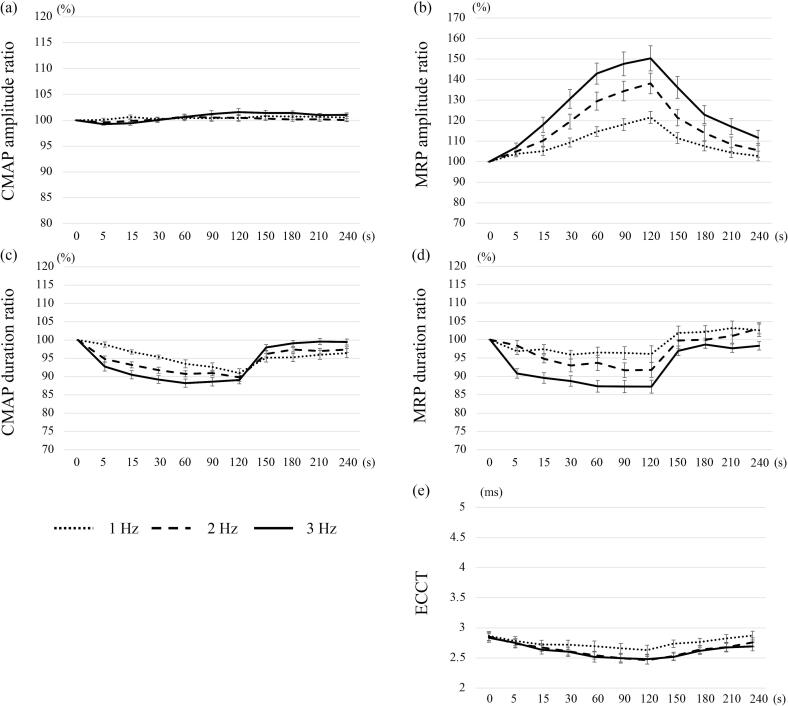A new method to evaluate staircase phenomenon in skeletal muscle using piezoelectric sensor
IF 2
Q3 NEUROSCIENCES
引用次数: 0
Abstract
Objective
The staircase phenomenon, which refers to the increases in the force of contraction with repetitive stimulation of the muscle, has been studied for many years, but the method is difficult and not widely used. Our objective was to evaluate the staircase phenomenon in skeletal muscle using a piezoelectric sensor.
Methods
Thirty-five subjects without neuromuscular diseases (normal controls), 11 patients with Becker muscular dystrophy (BMD), and 19 patients with myotonic dystrophy type 1 (MyD) were studied. Compound muscle action potential (CMAP) and movement-related potential (MRP) waveforms were recorded using piezoelectric sensors during repetitive stimulation of the median nerve, and the amplitudes and durations were measured. Excitation-contraction (E-C) coupling time (ECCT) was calculated from the difference between onset latencies of CMAP and MRP.
Results
In normal controls, MRP amplitude ratio (relative to baseline) increased significantly with increase in stimulation duration and with increase in stimulation frequency. In BMD and MyD, however, MRP amplitude ratio did not change significantly with increase in stimulation duration. Especially, in MyD, there was no change in MRP amplitude ratio with increase in frequency.
Conclusion
Staircase phenomenon abnormalities can be evaluated easily using piezoelectric sensors, indicating their potential utility for evaluating E-C coupling impairment in myopathies.
Significance
Piezoelectric sensors may be a useful tool to evaluate staircase phenomenon in skeletal muscle.



一种利用压电传感器评价骨骼肌阶梯现象的新方法。
目的:楼梯现象是指随着肌肉的反复刺激收缩力的增加,这一现象已被研究多年,但方法难度大,应用不广泛。我们的目的是利用压电传感器来评估骨骼肌的阶梯现象。方法:选取35例无神经肌肉疾病(正常对照)、11例贝克肌营养不良症(BMD)和19例1型肌强直性营养不良症(MyD)患者作为研究对象。利用压电传感器记录正中神经重复刺激过程中复合肌肉动作电位(CMAP)和运动相关电位(MRP)波形,并测量其振幅和持续时间。根据CMAP和MRP发作潜伏期的差值计算兴奋-收缩耦合时间(ECCT)。结果:在正常对照中,MRP振幅比(相对于基线)随刺激持续时间的增加和刺激频率的增加而显著增加。然而,在BMD和MyD中,MRP振幅比随刺激时间的增加没有显著变化。特别是在MyD中,MRP振幅比没有随频率的增加而变化。结论:利用压电传感器可以很容易地评估楼梯现象异常,表明其在评估肌病E-C偶联损伤方面的潜在用途。意义:压电传感器可作为评估骨骼肌阶梯现象的有效工具。
本文章由计算机程序翻译,如有差异,请以英文原文为准。
求助全文
约1分钟内获得全文
求助全文
来源期刊

Clinical Neurophysiology Practice
NEUROSCIENCES-
CiteScore
3.90
自引率
0.00%
发文量
47
审稿时长
71 days
期刊介绍:
Clinical Neurophysiology Practice (CNP) is a new Open Access journal that focuses on clinical practice issues in clinical neurophysiology including relevant new research, case reports or clinical series, normal values and didactic reviews. It is an official journal of the International Federation of Clinical Neurophysiology and complements Clinical Neurophysiology which focuses on innovative research in the specialty. It has a role in supporting established clinical practice, and an educational role for trainees, technicians and practitioners.
 求助内容:
求助内容: 应助结果提醒方式:
应助结果提醒方式:


